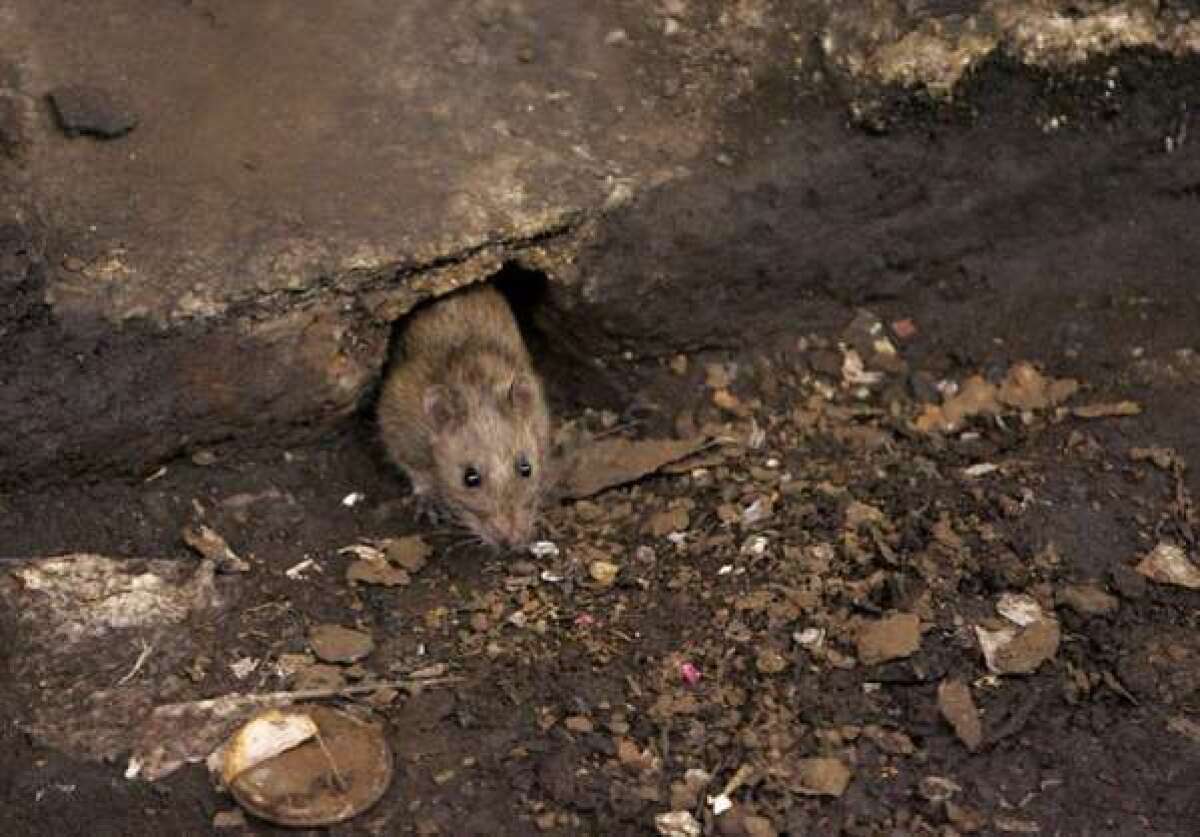Ban super rat poisons

- Share via
Poison-control centers receive about 15,000 calls a year from parents of children younger than 6 who have been exposed to poison that was intended to kill rats or mice, according to a January report by the U.S. Environmental Protection Agency. A disproportionate number of those children are black and Latino, and living in poverty.
The EPA’s concern about exposure extends to cats, dogs and wildlife as well. The so-called second-generation rodenticides that have been developed in recent years leave high concentrations of toxins in the bodies of rodents, which renders their carcasses poisonous to pets, birds of prey and other animals that eat them.
Yet one pesticide company is doing all it can to avoid meeting new safety regulations.
The new rodenticides became popular because people wanted the strongest possible product to use against vermin and often didn’t know about the hazards to other animals. According to a January article in Audubon Magazine, rodent poisons have been found in 78% of California’s mountain lions and in 92% of San Diego County’s raptors — hawks, owls and the like.
In 2008, the EPA took steps to protect children and animals by calling on manufacturers to stop selling second-generation poisons to retail consumers. (Exterminators and farms, for example, would still have access.) It also required that all rodenticides sold to retail consumers be in bait stations — small containers that rats and mice can enter to feed on poisoned food but that keep children and wildlife out. The companies had three years to comply.
All but one of the more than two dozen companies that made the poisons have stopped; Bell Laboratories, in fact, worked with the EPA on developing practical safety measures. But Reckitt Benckiser, which makes the familiar d-CON pesticides, battled the agency. In late January, the EPA responded by banning 12 d-CON products from being sold, but the company has appealed, initiating a process expected to take at least four years. During that period, the company may continue to sell its products, possibly putting the more cooperative companies at a competitive disadvantage.
Obviously, it shouldn’t take this long to resolve an appeal that involves a matter of public safety. Some municipalities have successfully prevailed on stores not to sell products that are frowned on by the EPA. There is little advantage to the public in having the more dangerous poisons; first-generation poison in bait stations still works, traps are still an option, and in the few instances in which these don’t work, vector-control agencies or exterminators could still bring in the stronger stuff.
More to Read
A cure for the common opinion
Get thought-provoking perspectives with our weekly newsletter.
You may occasionally receive promotional content from the Los Angeles Times.









